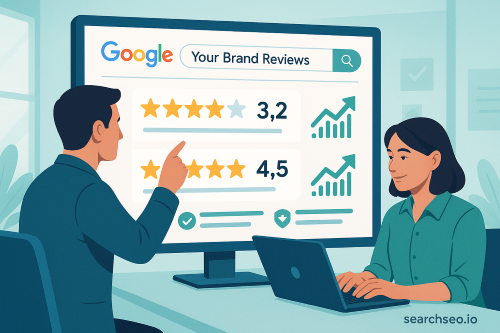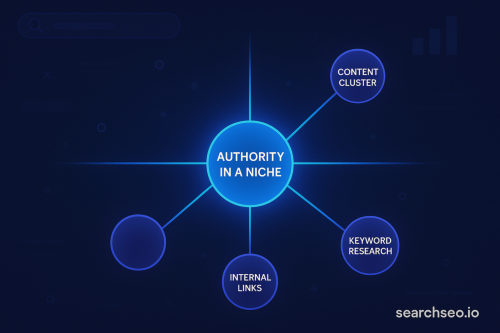Organic traffic is still the most reliable driver of long-term revenue. But let’s be honest, ranking on page one has never been more competitive.
If you are a marketer, business owner, SEO specialist, freelancer, or web developer who needs results yesterday, this playbook is for you.
Below you will find the exact framework to increase organic traffic, convert that traffic into leads, and turn those leads into loyal customers. Every tactic here is field-tested, future-proof, and mapped to a clear action you can take today.

Understanding organic traffic fundamentals
What organic traffic is and why it still matters
Organic traffic refers to visitors who land on your website after clicking an unpaid result in a search engine.
Unlike paid ads, organic clicks compound over time. One strong page can drive qualified traffic for years with no incremental cost.
When you increase organic traffic, you also:
- Build brand credibility and trust
- Lower customer acquisition costs
- Strengthen every downstream funnel metric
- Reduce dependence on ad platforms and budget swings
Sustained organic growth is what turns SEO from a cost center into a revenue engine.
How to measure your baseline before you optimize
You can’t improve what you don’t measure.
Start with these two dashboards.
Google Analytics 4
- Open Traffic acquisition
- Filter by Organic Search
- Record 28-day averages for:
- Sessions
- Engagement rate
- Conversions
Google Search Console
- Export your top 500 queries
- Track:
- Clicks
- Impressions
- CTR
- Average position
This becomes your living benchmark. Revisit it after every optimization sprint.
The strategic blueprint: core ways to increase organic traffic
Skim this list first. Then double down on the two or three levers that will move the needle fastest this quarter.
1. Know your audience and their search intent
Effective SEO starts with empathy.
Talk to customers. Read support tickets. Lurk in forums and Slack groups. Your goal is to understand how people describe their problems, not how tools label keywords.
Map intent to page type:
- Informational: blog posts and guides
- Navigational: brand and product pages
- Commercial: comparisons and reviews
- Transactional: landing pages
Matching intent is one of the fastest ways to increase organic search traffic.
2. Do deep keyword research and content gap analysis
Use SEO tools to find keywords with clear intent, moderate difficulty, and real business value.
Group keywords by topic, then compare your site to top-ranking competitors. Wherever they cover something you don’t, you’ve found your next opportunity.
This systematic approach removes guesswork and steadily increases organic traffic over time.
3. Create high-quality, people-first content
Google’s Helpful Content System rewards depth, clarity, and originality.
That means:
- One topic per page
- Clear answers upfront
- Real examples and visuals
- Actionable next steps
One excellent article can drive more organic traffic than ten shallow posts combined.
4. Nail on-page SEO fundamentals
Every page should have:
- One primary keyword
- Keyword placement in:
- Title tag
- H1
- Meta description
- First 100 words
- Descriptive image alt text
- FAQ or How-To schema where relevant
These SEO techniques to increase organic traffic take minutes but pay dividends for years.
5. Build topic clusters with internal linking
Create pillar pages supported by tightly related articles. Interlink them with descriptive anchor text.
This structure:
- Signals topical authority
- Improves crawlability
- Distributes link equity
- Grows organic traffic across the entire cluster
It’s one of the most reliable ways to increase organic traffic to your website at scale.
6. Fix technical SEO before it caps your growth
Run a weekly site crawl and clean up:
- Broken links
- Redirect chains
- Orphan pages
- Indexation errors
Prioritize Core Web Vitals:
- LCP under 2.5 seconds
- TBT under 200 milliseconds
- CLS below 0.1
Technical debt quietly limits rankings. Fix it early.
7. Earn backlinks through relevance, not volume
One authoritative, relevant backlink can outperform dozens of low-quality ones.
Focus on:
- Expert quotes
- Original data studies
- Partnerships and webinars
- Digital PR
High-quality links still spark disproportionate organic traffic growth.
8. Optimize UX for mobile-first users
More than 60 percent of searches happen on mobile.
Design accordingly:
- Readable font sizes
- Clean layouts
- No intrusive interstitials
Good UX reduces pogo-sticking and reinforces positive engagement signals.
9. Capture SERP features and AI overviews
Modern SERPs are crowded.
Structure content to win:
- Featured snippets
- People Also Ask
- Video results
- Generative AI summaries
Use concise definitions, bullet answers, and embedded media to leapfrog traditional rankings.
10. Refresh and repurpose existing content
Sort Search Console data by declining clicks.
Then:
- Update statistics
- Improve clarity
- Replace outdated years
- Add new visuals
- Resubmit for indexing
Refreshing content is one of the fastest ways to increase website traffic organically without creating new URLs.
Advanced and quick-win tactics
Use video and rich media for added visibility
Short videos, GIFs, and infographics:
- Increase dwell time
- Unlock Video and Image search
- Multiply SERP real estate
A two-minute explainer can rank in multiple formats at once.
Use AI to accelerate content creation, not replace it
AI works best for:
- Outlines
- Topic clustering
- First drafts
Human editors still matter. AI simply removes friction.
Scale responsibly with programmatic SEO
If you target thousands of similar queries, templates can work if each page adds real value.
Use structured data, unique insights, and careful quality control. Avoid thin or duplicate content at all costs.
Common mistakes that quietly kill organic growth
Even strong content strategies fail when these appear:
- Thin or duplicate content
- Ignoring shifts in search intent
- Over-optimization and keyword stuffing
Fix these fast, or they will drain the gains you’ve earned.
How to track success and keep improving
Great SEO is never set and forget.
Use these dashboards together:
- Google Analytics 4: sessions, engagement, revenue
- Google Search Console: clicks, impressions, CTR
- SearchSEO.io Performance Hub: organic trends, CTR signals, Core Web Vitals
Seeing everything in one place makes iteration faster and smarter.
Next steps: start growing your organic traffic today
Ready to put this framework into action?
Start your free 3-day trial of SearchSEO.io and see measurable traffic signals before you ever reach for a credit card. Setup takes five minutes. Cancellation is one click. Support is always available through the in-app chat.
Momentum favors the fast. Take the first step and watch your organic traffic climb.


.svg)

.svg)
%201.png)








.svg)